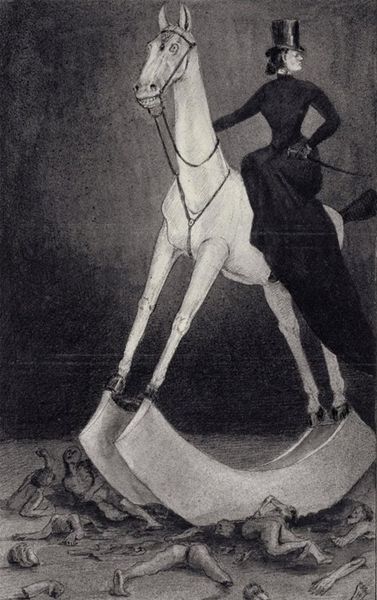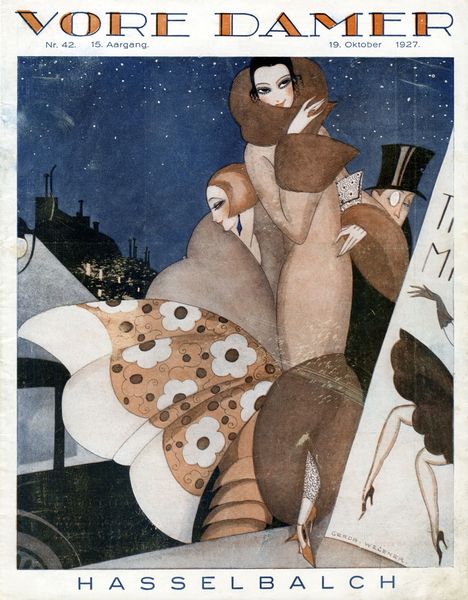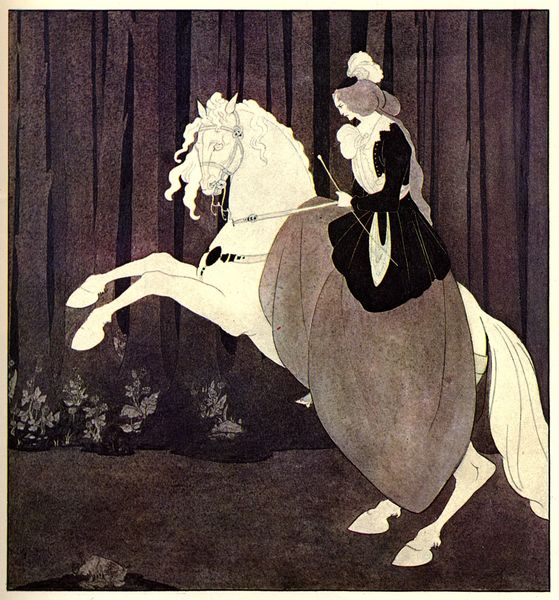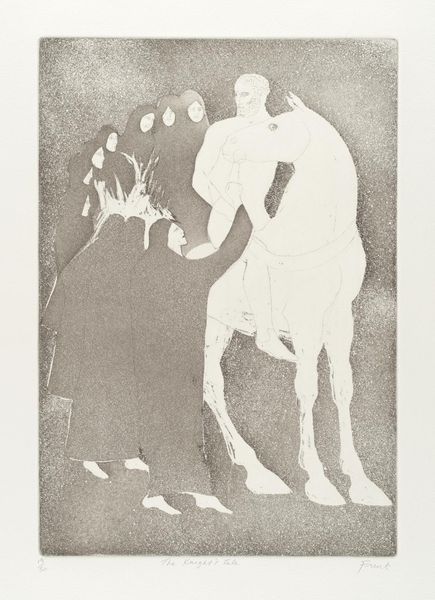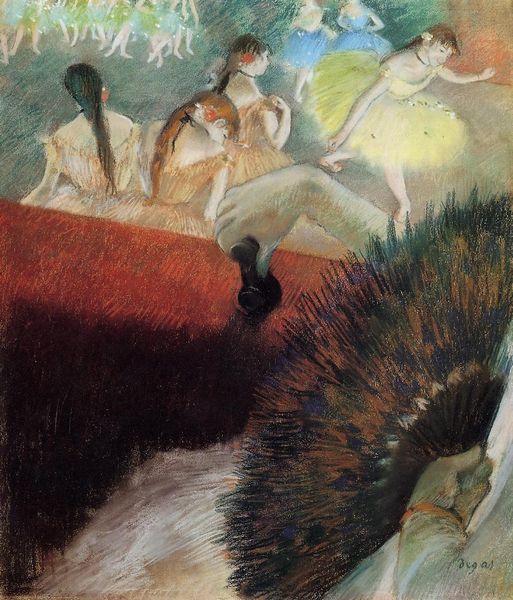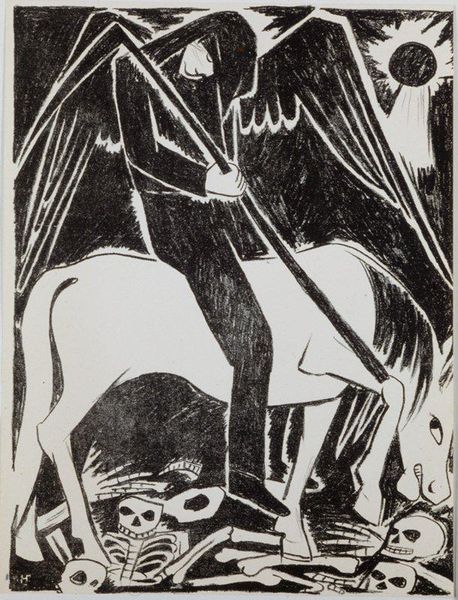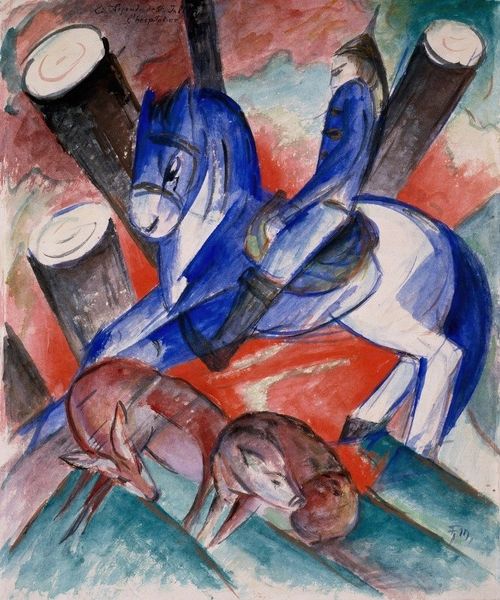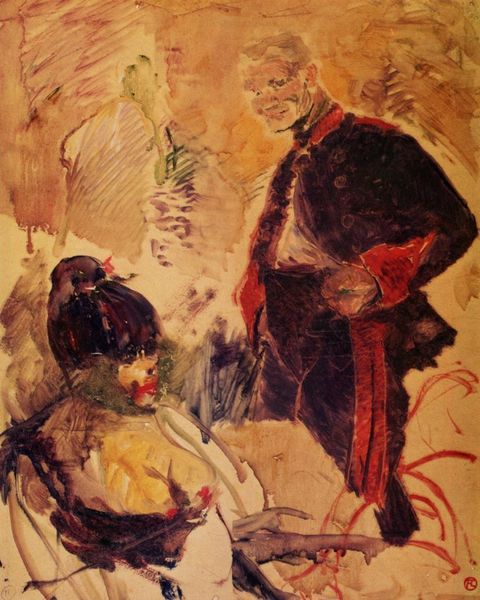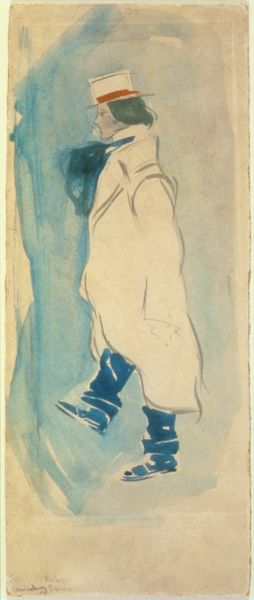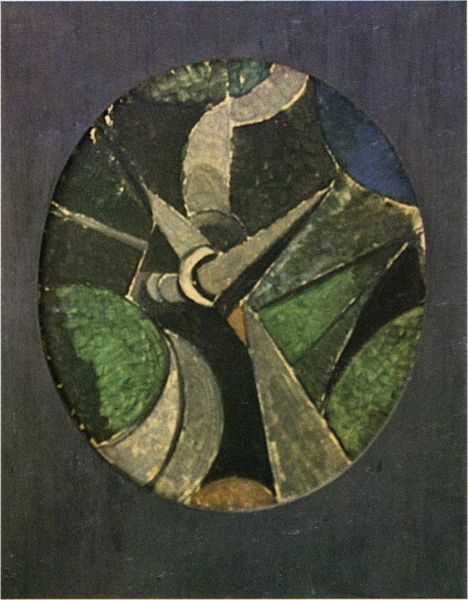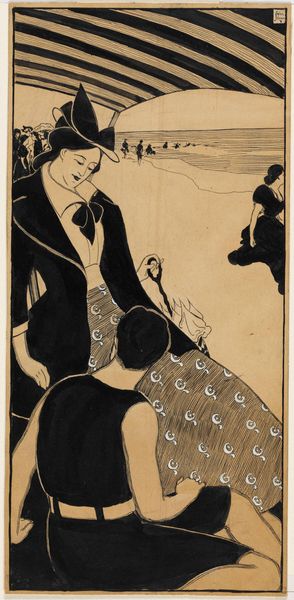
Copyright: Francis Bacon,Fair Use
Editor: Francis Bacon's "Portrait of Isabel Rawsthorn Standing in a Street in Soho," painted in 1967 with oil on canvas, really grabs my attention with its jarring depiction of the figure. There’s this distorted, almost fragmented quality that gives off an unsettling vibe. How do you interpret this work? Curator: From a formalist perspective, the power of this work lies within its deliberate manipulation of form and space. Note how the subject, Isabel Rawsthorn, is both contained and fractured by the geometric cage surrounding her. Consider the color palette – the stark contrast between the dark figure and the vibrant blues and oranges. The swirling brushstrokes create a sense of movement, while simultaneously trapping the figure within a static, almost claustrophobic environment. Does this not suggest a tension between the dynamic and the static, freedom and confinement? Editor: Yes, the geometric cage definitely stands out. I was also wondering about the background and the figure seeming blurred. It almost looks like a photograph that’s been deliberately smeared. Is that a formal technique? Curator: Precisely. Bacon's technique of blurring and distorting the figure serves to destabilize our perception. We are denied a clear, objective representation, and instead forced to confront a subjective and fragmented reality. How does this departure from traditional portraiture impact your understanding of the subject, Isabel Rawsthorn? Editor: It makes her seem more vulnerable, I think, or perhaps it reveals a hidden psychological state. It definitely moves beyond a simple likeness. Curator: Precisely. It invites contemplation about identity and representation itself. Editor: Thinking about the visual aspects, like the brushstrokes, colors, and composition, gives the portrait a completely new meaning beyond just "what" is shown. Curator: Indeed. Close visual analysis allows us to unlock the complexities within Bacon's work and appreciate his mastery of form and technique.
Comments
No comments
Be the first to comment and join the conversation on the ultimate creative platform.
